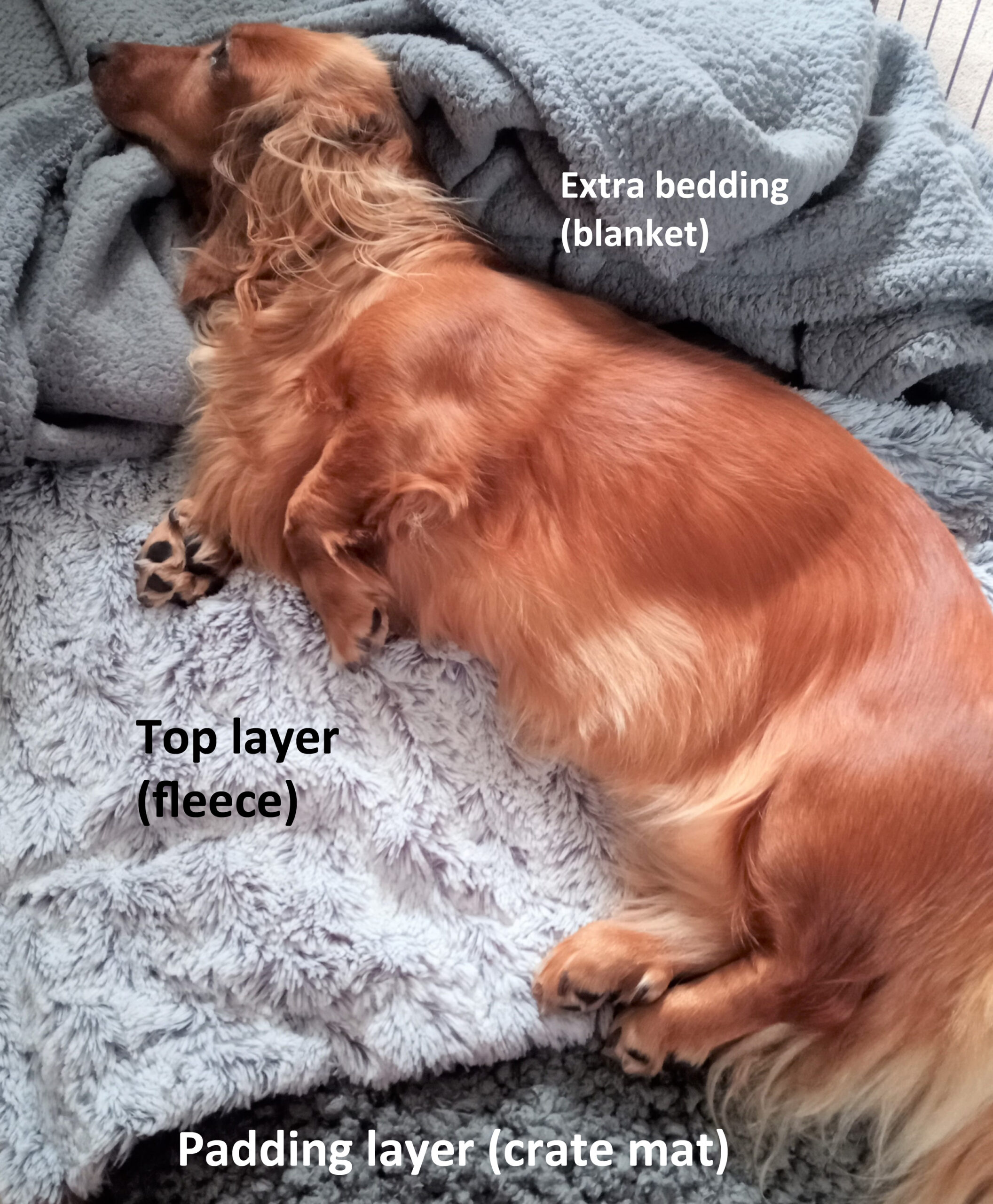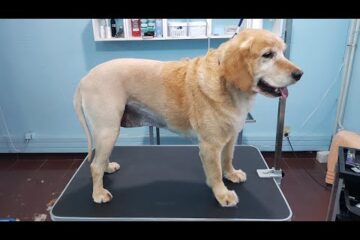If your dog is in uncontrollable pain, unable to walk, or if treatment is not possible, euthanasia may be the kindest option. Intervertebral Disc Disease (IVDD) can be a complex condition, requiring careful consideration of your pet’s quality of life and prognosis.
Symptoms can range from mild discomfort to severe paralysis, impacting the decision-making process for pet owners facing challenging decisions regarding the treatment and management of their dog’s condition. With options including surgery, conservative treatments, and lifestyle adjustments, it’s essential to be well-informed and work closely with your veterinarian to make the best decision for your beloved pet.
Understanding the progression of IVDD and the available treatment options can provide clarity and guidance during this difficult time.
Understanding Ivdd In Dogs
Intervertebral disc disease (IVDD) is a common spinal condition in dogs, particularly among certain breeds like Dachshunds and Corgis. It occurs when the cushioning discs between the vertebrae of the spinal column bulge or burst into the spinal cord space, leading to pain, nerve damage, and in severe cases, paralysis. Understanding the signs, symptoms, and treatment options for IVDD is crucial for dog owners in making informed decisions about their pet’s care.
Signs And Symptoms Of Ivdd
Dogs with IVDD may exhibit various signs and symptoms, including:
- Reluctance to move or climb stairs
- Back pain or sensitivity to touch
- Weakness or paralysis in the hind legs
- Lack of bladder or bowel control
Treatment Options For Ivdd
When it comes to treating IVDD in dogs, the options may include:
- Strict exercise restriction to minimize further damage to the spine.
- Spinal surgery to remove the damaged disc material and alleviate pressure on the spinal cord.
- Nonsurgical management, such as crate rest and back braces, which may be suitable for some cases.
When To Consider Euthanasia For A Dog With Ivdd
Introducing the difficult decision of whether to euthanize a dog suffering from Intervertebral Disc Disease (IVDD), especially when considering the severity of pain and suffering and its impact on the dog’s quality of life.
Severity Of Pain And Suffering
Making the decision to euthanize a dog with IVDD is often based on the severity of pain it is experiencing. Dogs in excruciating pain that cannot be managed through medication may benefit from a compassionate choice.
Impact On Quality Of Life
When a dog’s quality of life is significantly diminished due to IVDD, with the inability to walk, loss of bladder or bowel control, and constant suffering, euthanasia may be the most humane option.
Considering Non-surgical Options For Ivdd
When dealing with intervertebral disc disease (IVDD) in dogs, surgery is not always the only choice. Non-surgical options can be considered to help manage the condition and improve the quality of life for your furry friend. These options include rehabilitation and mobility aids, as well as alternative therapies for pain management.
Rehabilitation And Mobility Aids
Rehabilitation plays a crucial role in helping dogs with IVDD regain strength and mobility. It involves a combination of physical therapy exercises, hydrotherapy, and targeted muscle strengthening to improve the dog’s overall condition. Mobility aids such as back braces can also provide additional support to the affected area and help alleviate pain and discomfort.
In addition to rehabilitation exercises, crate rest guidelines should also be followed. Limiting your dog’s physical activity and providing a confined space for rest can aid in the healing process and prevent further damage to the spinal discs.
Alternative Therapies For Pain Management
Dogs with IVDD often experience pain and discomfort, and traditional pain medication may not always be sufficient. Alternative therapies can be explored to supplement pain management efforts. Acupuncture, for example, has been found to be highly effective in reducing pain and improving overall well-being in dogs with IVDD.
Other alternative therapies such as laser therapy, massage, and chiropractic adjustments can also provide relief from pain and help improve mobility. These non-invasive treatments can be used alongside traditional pain medication to enhance the dog’s comfort and quality of life.
It’s important to consult with a veterinarian experienced in IVDD management to determine the most suitable non-surgical options for your dog. A personalized treatment plan can be created based on the severity of the condition and the individual needs of your pet.

Credit: sevneurology.com
Financial Considerations For Ivdd Treatment
Dealing with IVDD treatment costs can be overwhelming for pet owners. It’s essential to consider financial aspects when deciding on the best course of action for your furry friend’s health.
Exploring Cost-effective Treatment Options
When facing IVDD, exploring cost-effective treatment options can help manage expenses while ensuring the well-being of your pet. Considering conservative treatments like pain management, mobility aids, and acupuncture may be financially viable alternatives to costly surgeries.
Support For Pet Owners Facing Financial Constraints
Pet owners encountering financial constraints can seek support through various resources. Some veterinary clinics offer payment plans or assistance programs to help alleviate the financial burden of IVDD treatment. Additionally, organizations and charities dedicated to animal welfare may provide financial aid for pet owners in need.
Key Points:
- Consider cost-effective treatment options for IVDD.
- Seek support from veterinary clinics and organizations for financial assistance.
Recovery And Prognosis For Dogs With Ivdd
After a dog is diagnosed with Intervertebral Disc Disease (IVDD), the road to recovery can be challenging. The rehabilitation process plays a crucial role in helping dogs regain strength and functionality. It is important to manage expectations and understand the possible outcomes when it comes to their recovery.
Rehabilitation for dogs with IVDD typically involves a combination of medical treatment, physical therapy, and lifestyle adjustments. The goal is to reduce pain, improve mobility, and prevent further damage to the spinal cord. Physical therapy techniques, such as hydrotherapy (using water for exercise), laser therapy, and therapeutic exercises, can help strengthen the muscles and increase flexibility.
During the recovery period, dogs may need to be crate-rested to limit their movement and allow for healing. This may be accompanied by anti-inflammatory medications to alleviate pain and swelling. Some dogs may also benefit from the use of specialized back braces, which provide support and stability to the spine.
Understanding the life expectancy of dogs with IVDD is crucial for making informed decisions about their care. Fortunately, many dogs with mild to moderate IVDD can recover with appropriate treatment and rehabilitation. With proper care, they can lead happy and fulfilling lives.
However, it’s important to note that the prognosis may vary depending on the severity of the spinal injury. Dogs with more severe injuries may have a lower chance of full recovery. In some cases, surgical intervention may be necessary to stabilize the spine and relieve compression on the spinal cord.
For dogs with severe IVDD or those who are unable to walk and experience uncontrollable pain, euthanasia may be considered. While it is a difficult decision to make, it may be the kindest option to end their suffering. Consulting with a veterinarian can provide guidance and support during this emotional time.
In conclusion, the recovery and prognosis for dogs with IVDD depend on various factors, including the severity of the condition and the commitment to rehabilitation. With the right treatment and care, many dogs can regain their mobility and live fulfilling lives. However, it’s important to be realistic about the potential challenges and make decisions in the best interest of the dog’s well-being.
:strip_icc()/the-stages-of-degenerative-myelopathy-3384548-FINAL-5b915a547a0142ab938f14fd3292f47c.png)
Credit: www.thesprucepets.com
Owners’ Dilemma – Deciding On Ivdd Treatment
Pet owners face the agonizing decision of when to put down a dog with IVDD. With spinal surgery not always an option, owners must weigh quality of life against the dog’s suffering. Consulting with a vet is crucial for making this difficult choice.
Difficult Decisions For Owners With Severe Ivdd Dogs
Owners of dogs with severe IVDD face a daunting and emotional decision when it comes to determining the best course of treatment for their beloved pets. While spinal surgery may be the preferred option for some, it is not always feasible or affordable. This leaves owners grappling with the difficult choice of deciding when it may be time to put down their dog.
Spinal surgery, the most effective treatment for severe IVDD, can provide relief from pain and neurological symptoms. However, it is a complex procedure that carries its own set of risks and costs. Not all dogs are suitable candidates for surgery, either due to their overall health or the advanced stage of their IVDD. In such cases, owners must explore alternative options or consider euthanasia.
It is essential for owners to consult with their veterinarian to discuss the severity of their dog’s condition, the potential outcomes of various treatment options, and the impact on the dog’s quality of life. While the decision ultimately rests with the owner, the guidance and expertise of a veterinarian can help provide clarity and support during this challenging time.
Emotional And Behavioral Aspects Of Ivdd Treatment
The emotional toll of IVDD treatment is often overlooked, but it is an important aspect for owners to consider. Witnessing a beloved pet in pain and discomfort can be heart-wrenching, and the responsibility of making life-altering decisions can be overwhelming.
Owners may also have to navigate the behavioral changes that can accompany IVDD and its treatment. Dogs with IVDD often experience changes in mobility, bladder, and bowel control, and may exhibit signs of anxiety, frustration, or depression. These behavioral changes can further complicate the decision-making process.
Additionally, owners must take into account the financial implications of IVDD treatment. Spinal surgery and ongoing rehabilitation can be costly, and not all pet owners have the resources to pursue these options. Financial constraints can add extra stress to an already difficult situation.
In summary, owners faced with the decision of IVDD treatment for their dogs with severe cases are confronted with a range of challenging considerations. From weighing the risks and benefits of surgery to managing the emotional and financial aspects, each decision requires careful thought and consultation with veterinary professionals. Ultimately, owners must prioritize the well-being and quality of life of their pets, making the best decision they can in a difficult circumstance.
Surgical Intervention For Dogs With Ivdd
For dogs suffering from Intervertebral Disc Disease (IVDD), surgical intervention may become a necessary option, particularly for cases in which conservative treatments have shown limited or no improvement in the dog’s condition. Surgical procedures for IVDD aim to relieve spinal cord compression and alleviate associated symptoms, ultimately improving the dog’s quality of life.
Purpose Of Spinal Surgery
Spinal surgery for dogs with IVDD is primarily conducted to address the underlying cause of spinal cord compression and alleviate the associated pain and neurological deficits. The procedure aims to remove the herniated disc material that is pressuring the spinal cord, thus creating space for nerve recovery and reducing the risk of further damage.
Considerations For Surgical Intervention
When considering spinal surgery for a dog with IVDD, several factors come into play. The severity of the condition, the dog’s overall health status, and the feasibility of post-operative care are crucial considerations. Additionally, the financial aspect of surgical intervention should be taken into account as it can be a significant investment. It’s essential for pet owners to thoroughly discuss these factors with their veterinarian to make an informed decision that aligns with the best interest of their beloved pet.

Credit: therehabvet.com
Concluding Ivdd Treatment
When considering IVDD treatment for a dog, the decision on whether to put them down should be based on their quality of life. Severe pain, lack of mobility, and no improvement despite treatment may warrant considering euthanasia. Owners should seek professional advice to make the best decision for their pet.
End-of-life Considerations
Once all avenues of treatment for IVDD have been exhausted, pet owners may have to consider end-of-life decisions for their dogs’ well-being. It is a difficult yet crucial stage that requires careful thought and consideration. When contemplating this decision, various factors and quality of life assessments should be taken into account to ensure the humane and compassionate handling of the situation.
Quality Of Life Assessment For Dogs With Ivdd
In evaluating the quality of life for dogs with IVDD, several aspects need to be considered to determine the well-being of the pet. Factors such as pain management, mobility, and overall happiness are crucial in assessing the dog’s quality of life. This assessment will help pet owners make a well-informed and compassionate decision about the best course of action for their beloved companion.
Frequently Asked Questions
How Fast Does Ivdd Get Worse?
IVDD can worsen gradually over time, with degenerated disc material escaping over several days or weeks. The speed varies but most dogs with mild to moderate IVDD will recover with rehabilitation or surgery. For those with severe injuries, the odds of recovery decrease.
Conservative treatments may help if surgery isn’t affordable.
What Is The Life Expectancy Of A Dog With Ivdd?
Most dogs with mild to moderate IVDD can recover with rehabilitation or surgery, but severe spinal injuries reduce chances.
What To Do If I Can’t Afford Ivdd Surgery?
If you can’t afford IVDD surgery for your pet, there are alternative options. Conservative treatments like pain management, mobility aids, and acupuncture can help improve your pet’s condition without the need for costly surgery.
Can A Dog Recover From Stage 4 Ivdd?
A dog with stage 4 IVDD may recover with surgery or other treatments, but outcomes vary.
Conclusion
In difficult situations like IVDD, deciding when to put down a dog can be heartbreaking. It’s important to consider the severity of their pain and suffering. While some dogs can recover with rehabilitation or surgery, others may not have the same prognosis.
Conservative treatments and supportive options may be explored if surgery is not feasible. Ultimately, the well-being and quality of life of your beloved companion should guide your decision. Seek guidance from your veterinarian to make the best choice for your furry friend.



